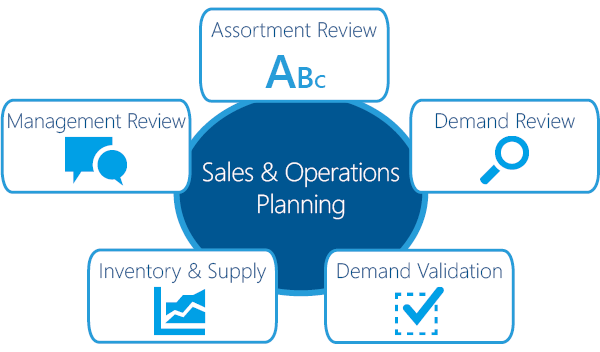Cost to Company (CTC) represents the total expense incurred by an employer for an employee, encompassing all financial benefits, bonuses, and allowances. It includes the basic salary, allowances (such as house rent and travel), bonuses, and any other perks. The calculation of CTC also integrates contributions to statutory benefits like Provident Fund (PF), which is a mandatory savings scheme. To compute CTC with PF, add the basic salary, allowances, and bonuses, and then include the employer’s PF contribution, which is typically 12% of the basic salary. Understanding CTC helps in assessing the true cost of employment and salary package offerings.

Introduction to Cost to Company (CTC)
Cost to Company (CTC) denotes the total expenditure an organization incurs to employ an individual, reflecting the full spectrum of financial commitments beyond the basic salary. It includes various components such as allowances, bonuses, and additional perks provided to the employee. Crucially, CTC also accounts for the employer’s contributions to mandatory benefits like the Provident Fund (PF), a compulsory savings scheme prevalent in many countries. The PF contribution, typically calculated as a percentage of the basic salary, is added to the overall CTC. This comprehensive measure allows organizations to evaluate the complete financial impact of hiring an employee, while also enabling employees to understand their total compensation package beyond their net salary.
Components of Cost to Company (CTC)
The Cost to Company (CTC) comprises several essential components that together reflect the total expenditure an employer incurs for an employee.
Basic Salary is the primary element of CTC, representing the core wage paid to the employee before additional allowances or benefits are factored in.
Allowances and Perks include various financial benefits such as house rent allowance, travel allowances, and other stipends designed to cover specific expenses or improve the employee’s lifestyle.
Bonuses are extra payments made at regular intervals, often based on individual performance or company success, and are included in the overall CTC.
Other Benefits encompass non-monetary advantages like health insurance, company vehicles, or meal vouchers. This category also includes the employer’s contributions to retirement savings plans, such as the Provident Fund (PF).
Understanding Provident Fund (PF)
A Provident Fund (PF) is a compulsory savings plan designed to provide financial stability for employees upon retirement. It involves regular contributions from both the employee and employer, which are accumulated over time and accrue interest. Typically, employees contribute a fixed percentage of their basic salary, with the employer matching this amount.
Importance of PF in CTC
In the realm of Cost to Company (CTC), the Provident Fund is a significant element as it reflects the total financial commitment an employer makes towards an employee’s long-term financial security. The employer’s PF contribution is included in the CTC, thereby representing a portion of the overall employment cost. Contributions to the PF not only bolster an employee’s retirement savings but also enhance the comprehensive value of their compensation package. Recognizing the role of PF helps employees understand the full extent of their benefits beyond just their immediate salary.
How to Calculate CTC?
Basic Calculation Formula:
To calculate the Cost to Company (CTC), begin with the basic salary, which forms the foundation of the total compensation. Add any allowances such as house rent and travel allowances, and include periodic bonuses. Also, factor in additional benefits like health insurance and other company-provided perks.
Including Provident Fund Contributions:
Incorporate the Provident Fund (PF) contributions into the CTC calculation. The PF typically includes both employee and employer contributions, with each contributing a percentage of the basic salary. Add these total PF contributions to the sum of the basic salary, allowances, bonuses, and other benefits.
This method ensures a comprehensive view of the total financial commitment from the employer and the complete compensation package offered to the employee. By including PF contributions, you get a full picture of the CTC, reflecting all components of the employee’s remuneration.
Example Calculation of CTC with PF
Step-by-Step Calculation:
- Basic Salary: Start with the employee’s basic salary, say ₹50,000 per month.
- Allowances: Add allowances such as house rent allowance (₹10,000) and travel allowance (₹5,000) per month.
- Bonuses: Include any annual bonuses, for example, ₹30,000. To reflect this monthly, divide by 12 months, giving ₹2,500 per month.
- Additional Benefits: Account for extra benefits like health insurance, valued at ₹1,000 per month.
- Provident Fund Contributions: Calculate the PF contributions. With a PF rate of 12%, both the employee and employer contribute ₹6,000 each per month (12% of ₹50,000).
Total CTC Calculation:
- Basic Salary: ₹50,000
- Allowances: ₹15,000
- Bonuses (monthly): ₹2,500
- Additional Benefits: ₹1,000
- PF Contributions: ₹12,000
Total CTC = ₹50,000 + ₹15,000 + ₹2,500 + ₹1,000 + ₹12,000 = ₹80,500 per month.
Impact of CTC on Employee Salary Packages
Cost to Company (CTC) plays a crucial role in shaping employee salary packages by providing a complete picture of total compensation. Beyond just the basic salary, CTC encompasses various elements such as allowances, bonuses, additional benefits like health insurance, and Provident Fund contributions. This comprehensive view helps employees understand their full remuneration, beyond the net pay they receive. For employers, CTC represents the total financial investment in hiring and retaining employees, aiding in budgeting and comparing compensation packages with industry benchmarks. A clear understanding of CTC enables employees to evaluate their total benefits accurately and make informed career choices. It also facilitates better salary negotiations, as it highlights all financial components involved. Overall, CTC is a key factor in assessing the attractiveness and competitiveness of a salary offer, benefiting both employees and employers.
Conclusion
In conclusion, understanding Cost to Company (CTC) is essential for both employees and employers. CTC provides a comprehensive view of the total financial commitment associated with an employee, encompassing basic salary, allowances, bonuses, and additional benefits like health insurance and Provident Fund contributions. For employees, it offers insight into their complete remuneration package, aiding in informed career decisions and effective salary negotiations. For employers, CTC aids in budgeting and ensuring competitive compensation packages. Overall, CTC is a critical factor in evaluating and presenting salary offers, contributing to transparency and satisfaction in the employment relationship.
Frequently Asked Questions (FAQs)
1. What does CTC include?
CTC includes the basic salary, various allowances (such as house rent and travel), bonuses, and additional benefits like health insurance and Provident Fund contributions. It represents the total financial expense incurred by an employer for an employee.
2. How does CTC differ from take-home salary?
CTC is the total cost of employment, including all allowances, benefits, and employer contributions, while take-home salary is the amount an employee receives after deductions like taxes, Provident Fund contributions, and other statutory deductions.
3. Why is understanding CTC important for employees?
Understanding CTC helps employees gain a clear picture of their total compensation package, including all benefits and contributions beyond their net salary. This knowledge aids in making informed career decisions and negotiating better salary packages.
4. How can CTC be used in salary negotiations?
CTC provides a detailed breakdown of all financial components of a salary offer, allowing employees to negotiate based on the total value of their compensation package. It helps in evaluating and comparing offers more effectively.
Read More:
- Mutual Funds and Taxes: How Income Tax Slabs Affect Your Returns
- What are tax-free annuity exchanges?
- 13 tax-free incomes in India – every investor should know
- Tax Return Tips for Last-Minute Filers

Hello, I am Tanisha Kriplani, graduated in computer science from Delhi University. I am passionate about web content writing and have a strong interest in Data Analytics and Data Engineering.












